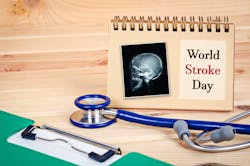October 29th is World Stroke Day to gain awareness of the warning signs of stroke, screenings and prevention.
Doctors from Hackensack Meridian Health are available to talk about the significance screenings and treatments for Stroke this month on a variety of topics including:
- Air Pollution Found to Be a Risk Factor for Stroke - Even short-term exposure to air pollution can increase a person’s risk for stroke. The findings, published recently in the journal Neurology, are particularly concerning given this summer’s consistent air quality alerts experience across the country from wildfires in Canada.
The analysis included more than 18 million cases of ischemic stroke, the most common type of stroke, which is caused by a blood clot traveling to the brain. The researchers found that stroke risk was nearly 30% higher when people had been exposed to nitrogen dioxide up to five days prior. For carbon monoxide exposure, the risk was 26% higher; for sulfur dioxide, 15% higher; and for ozone exposure, 5% higher.
The risk of dying from a stroke also went up with exposure to certain pollutants, according to the study analyzers. Short-term exposure to nitrogen dioxide was linked to a 33% increased risk of death from stroke, and for sulfur dioxide, a 60% increased risk.
- Angioscreen Found to Be Successful Tool in Predicting Stroke Risk - Hackensack Meridian Health is now providing Angioscreen Vascular Screening at several sites across the network. The fifteen-minute, comprehensive heart and vascular screening assesses a patient’s risk of both heart attack and stroke. It includes carotid artery ultrasound, peak systolic velocity (PSV), ankle brachial index, blood pressure check in both arms, abdominal aortic aneurysm check, body mass index, heart rhythm EKG and pulse.
- BEFAST Essential for Positive Outcomes in Stroke - When it comes to stroke, being fast in recognizing its symptoms and seeking medical attention quick is important. Many strokes are treatable if noticed quickly. To help get the word out about this medical professionals use the acronym B.E.F.A.S.T. The B stands for balance, check for a sudden loss of balance. The E stands for eyes, monitor for vision loss. F stands for face, look for an uneven smile. A stands for arm, check for arm weakness, especially on one side. S stands for speech, monitor for slurred speech. T stands for time, as in if you see any of the symptoms above, it’s time to call 9-1-1.
- Advances in Clot Busting Drugs & Surgeries Saving Lives - Endovascular thrombectomy (EVT) is a breakthrough intervention for stroke that allows physicians to pull blood clots from the veins of stroke victims. Endovascular thrombectomy involves inserting catheters through the groin or wrist, moving them up to the brain, and retrieving the blood clot, allowing blood flow to return. The interventions have been shown to save lives and reduce disability, with some patients achieving full recovery.
- Cardiac Rehabilitation a Successful Tool in Preventing Death from Stroke - Research at Hackensack Meridian JFK Johnson Rehabilitation Institute found through its groundbreaking Stroke-HEARTTM Trials, cardiac rehabilitation can reduce the chance of a stroke patient dying by 76%. Research published in the Journal of Stroke & Cerebrovascular Diseases found that JFK Johnson’s Stroke Rehabilitation Program’s 36 sessions of medically monitored cardiovascular training made an extraordinary difference in how patients recovered from stroke. The program also includes psychological, nutritional, and educational support and risk factor management.

